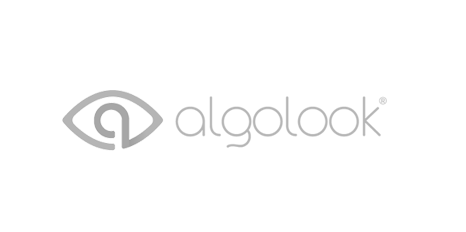AI IMPACT
For the Health of People
AI solutions have the potential to revolutionize the way we live and work, improving efficiency, accuracy, and quality of life.
Free Download
Case Study: How a Machine Vision Model Counts Bridge Crossings in Rural Rwanda
33,000 more Rwandans can now access healthcare, education, and markets year-round without fear of their surroundings.
Download ⇢

It's a Wonderful Story: Our Machine Vision Model Counted Bridge Crossings in Rural Rwanda & Over 33,000 People Were Helped
Learn how we partnered with Mortenson Center in Global Engineering at the University of Colorado Boulder to make access to healthcare, markets, and schools possible in rural Rwanda.
AI will ultimately reshape our understanding of the human condition and our relationship with technology, challenging us to continuously reflect on the ethical and societal implications of this rapidly emerging paradigm.
Healthcare
AI-powered solutions can analyze medical data to assist physicians in diagnosing diseases, identifying potential health risks, and predicting potential health issues. AI can also assist in developing personalized treatment plans for patients based on their unique medical history.
For Physicians
Image recognition
Machine vision technology can be used to help diagnose diseases based on medical images such as Ultrasounds, X-rays, CT scans, and MRIs. For example, an AI algorithm can be trained to recognize patterns in lung scans that indicate the presence of lung cancer.
Natural language processing
Natural language processing (NLP) can help physicians interpret patient symptoms and medical histories more accurately. For example, a NLP solution can be used to analyze electronic health records to identify key symptoms that could be indicative of a particular disease.
Medical chatbots
Medical AI chatbots can help patients self-diagnose common medical issues and provide preliminary treatment recommendations. For example, a chatbot could be trained to recognize the symptoms of a common cold and recommend over-the-counter medications to relieve symptoms.
For Patients
Personalized treatment plans
AI algorithms can analyze large amounts of data from clinical trials, medical records, and genetic testing to develop personalized treatment plans for patients. For example, an AI solution can help cancer patients identify the most effective treatment options based on their specific cancer type, genetic profile, and other health factors.
Medication management
Data-driven medication management systems can help patients stay on track with their medication schedules and reduce the risk of adverse drug reactions. For example, a smartphone app can remind patients to take their medications at the correct times, alert them to potential drug interactions, and provide information about possible side effects.
Mental health support
AI-powered mental health chatbots and virtual therapists can provide patients with round-the-clock support for mental health issues such as depression and anxiety. For example, a chatbot could be programmed to engage in cognitive behavioral therapy techniques and provide support and encouragement to patients in between therapy sessions with a human therapist.
Explore Intelligent Products Built by Synaptiq for Healthcare
CASE STUDY
Vasolabs uses machine vision models to detect plaques in the carotid artery in minutes
Discover Synaptiq’s dynamic machine vision solution for calculating vascular age and detecting plaques in the carotid artery and providing care teams with rapid answers, saving lives with early disease detection and monitoring.
Read the Case Study ⇢

Safety
AI solutions for professionals in the safety industry have the power to proactively detect and prevent safety hazards, automate safety inspections, and provide real-time support during emergencies, ultimately reducing the risk of accidents and saving lives. For victims, AI solutions can detect and prevent crimes, locate missing persons, and provide real-time support during emergencies, ultimately reducing the risk of harm and improving the safety of individuals. AI's ability to analyze large amounts of data quickly and accurately makes it a valuable tool for law enforcement agencies and safety professionals to improve workplace safety and protect potential victims.
For Professionals
Predictive maintenance
AI can be used to analyze sensor data from equipment and machinery to detect potential issues before they cause safety hazards. This can help safety professionals prioritize maintenance tasks and avoid costly and dangerous equipment failures.
Video analytics
Video analytics powered by machine vision can help safety professionals monitor workplaces for safety hazards in real time. For example, video analytics can be used to detect workers not wearing safety gear, identify potential trip hazards, or detect dangerous situations like fires or gas leaks.
Risk assessment
AI can be used to analyze historical safety data to identify patterns and predict potential hazards in the future. This can help safety professionals proactively address safety risks before they become accidents.
Automated safety inspections
AI can be used to automate safety inspections, reducing the need for manual inspections and increasing efficiency. For example, drones equipped with cameras and AI algorithms can inspect hard-to-reach areas like roofs and high scaffolding.
Emergency response
AI-powered chatbots and virtual assistants can help guide employees through emergency situations and provide real-time support. For example, a chatbot could help employees navigate a building during a fire or provide first aid instructions.
For Individuals
Predictive policing
AI can be used to analyze crime data to identify patterns and predict where crimes are likely to occur. This can help law enforcement agencies deploy resources more effectively to prevent crimes and protect potential victims.
Personal safety devices
Personal safety devices powered by AI, such as wearable devices that can detect falls or other emergencies, can alert emergency services or loved ones to provide immediate assistance to victims.
Automated emergency response
AI can be used to analyze emergency calls and provide real-time support to victims. For example, a chatbot or virtual assistant could guide victims through performing first aid or provide information on nearby medical facilities.
Social media monitoring
AI can be used to monitor social media platforms for potential threats or danger to victims. This can help law enforcement agencies take action to protect potential victims before harm occurs.

Vehicle identification solution that expedites investigations and crime analysis.
Machine Vision & Intelligent Automation
Cyber Crime Software

Alerting school administrators of potential mass shootings before they happen.
Predictive Analytics & Machine Vision
Firearm Detection in Schools

Removes costly 'lost in translation' issues in emergency response dispatching.
Natural Language Processing
Workplace Safety Solutions
Equity
When AI is designed and used in a way that promotes equity, it can help to reduce bias and discrimination by making decisions based on objective data and analysis rather than subjective judgment. It can also help to identify and address areas of inequality by providing insights and recommendations that can inform policy and decision-making.
For Employers
Bias detection
AI can be used to analyze job postings, resumes, and interview transcripts to detect potential biases in the hiring process. This can help identify and eliminate barriers to entry for underrepresented groups.
Pay equity analysis
The use of analysis that employs AI technology can aid in the identification of possible pay gaps among employees belonging to different genders or races, thereby ensuring equitable compensation for all.
Employee sentiment analysis
Sentiment analysis can be used to analyze employee feedback and identify potential areas of concern related to equity and inclusion. This can help employers address issues and improve the overall workplace culture.
Diversity and inclusion training
Training modules that incorporate AI technology can be employed to educate employees on matters concerning diversity and inclusion, facilitating greater understanding and fostering a more welcoming and inclusive work environment.
Performance evaluations
AI-powered analysis can be used to identify potential biases in performance evaluations and feedback. This can help ensure that all employees are being evaluated fairly and based on their actual performance, rather than biases or assumptions.
For Employees
Inclusive language checkers
Software that utilizes AI can scan written communication for inclusive language, thereby enabling employees to avoid language that could be deemed discriminatory or exclusive.
Personalized learning
Personalized learning programs that incorporate AI technology can support employees in enhancing their skills and knowledge concerning equity and inclusion, which can increase their comprehension of relevant issues and encourage them to become advocates for positive transformation.
Virtual mentorship
Virtual mentorship programs that use AI matching algorithms can help employees connect with mentors and allies who can provide support and guidance related to equity and inclusion.
Performance feedback
Performance feedback systems that use AI can help employees receive feedback that is unbiased and based on their actual performance, rather than biases or assumptions related to their gender, race, or other characteristics.
CASE STUDY
HR recommender helps ensure employers are meeting their compliance obligations to employees as rules and regulations change fast state-by-state.
Learn how an intelligent platform in the HR compliance business was able to go from using their coveted legal minds to manually follow the changing laws to those legal minds now having the time to help HR departments thrive.
Read the Case Study ⇢














